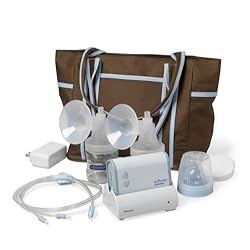So for a long time I've been wanting to put together a list of anti-cio resources. Please submit your own resources as well! Feel free to use it in whatever way you want.
No Cry Sleep Alternatives:
- No cry sleep solution
website: http://www.pantley.com/elizabeth/books/0071381392.php
- Nighttime Parenting and The Sleep book
- Sleeping with your baby
- Sweet Dreams: A Pediatrician's Secrets for a Baby's Good Night's Sleep
- Dr. Sears list of sleep tips:
http://www.askdrsears.com/html/7/T070300.asp
Pillow Talk: Helping Your Baby Get a Good Night's Sleep: http://www.mother-2-mother.com/pillowtalk.htm
- My list of sleep tips:
http://compassionatemotherhood.blogspot.com/2010/08/lay-me-down-to-sleep-gently.html
and
http://compassionatemotherhood.blogspot.com/2010/09/sleep-solution-replace-your-mommy.html
Peer Reviewed Research:
The Effect of Excessive Crying on Emotion Regulation: http://www.informaworld.com/smpp/content~content=a785034409~db=all
From the AAP: http://aapnews.aappublications.org/cgi/content/abstract/14/4/21
Maternal Emotional Availablitly at Night Time Predicts Sleep Quality: http://www.ncbi.nlm.nih.gov/pubmed/20545404
Baby Sleep Requirements: http://www.parentingscience.com/baby-sleep-requirements.html
Infant Crying and Maternal Responsiveness: http://www.jstor.org/pss/1127506
Science Says Excessive Crying Can be Harmful to Infants (review of research): http://askdrsears.com/html/10/handout2.asp
Australian Assocationa for Infant Mental Health Stament on CIO: http://www.gymealily.org/resources_paperva7.htm
Quotes from Health Care Professionals and Research Articles: http://bawlingbabies.blogspot.com/2006/06/quotes-from-various-doctors.html
Marital Problems Cause Baby Sleep Issues (not visa versa):
http://www.wdsu.com/r/27926285/detail.html
There is No Empirical Evidence that CIO is Safe:
Handout, "Is CIO Appropriate?": http://www.infantsleep.org/images/WAIMH_Handout2.pdf
No Research to Back CIO (like several books claim): http://www.infantsleep.org/cryingitoutresearch.html
Normal Infant Sleep:
Night Waking: http://www.storknet.com/cubbies/breast/AS-nightwaking.htm
Night Waking and Protection from SIDS: http://www.drmomma.org/2009/10/sleeping-with-baby-breastfeeding-night.html
Baby Sleep Requirements: http://www.parentingscience.com/baby-sleep-requirements.html
Healthy Infant Sleep (Dr. McKenna): http://www.drmomma.org/2009/12/healthy-infant-sleep.html
Sleeping Through the Night: http://www.drmomma.org/2009/12/sleeping-through-night.html
Collection of Sleep Studies: http://home.kellymom.net/parenting/sleep/sleepstudies.html
8 Infant Sleep Facts Every Parent Should Know: http://www.askdrsears.com/html/7/T070200.asp
Is Your Baby Sleeping Through the Night Yet?: http://www.drjen4kids.com/soap%20box/sleep%20stuff.htm
Wakeful 4 Month Olds: http://www.kellymom.com/parenting/sleep/4mo-sleep.html
When Will My Baby Sleep Through The Night?: http://www.llli.org/FAQ/sleep.html
Why Are Some Babies Night Owls?: http://www.ivillage.com/why-are-nursing-babies-often-night-owls/6-n-136871
Videos:
Why CIO is Harmful: http://www.youtube.com/watch?v=fbYk5RiIwZI
Additional Information:
From the Baby's Perspective: http://parentingredefined.blogspot.com/2010/12/letters-from-baby-please-dont-let-me.html
Comfort and Crying: http://theattachedfamily.com/membersonly/?p=1255
A First-Person Perspective: http://womanuncensored.blogspot.com/2009/12/just-let-her-cry.html
Culture (Africa): http://www.blacktating.com/2010/09/why-african-babies-dont-cry.html
Why I No Longer Believe Babies Should CIO: http://www.theglobeandmail.com/life/parenting/infant/sleep/why-i-no-longer-believe-babies-should-cry-themselves-to-sleep/article149001/print/
Crying In-Arms: http://www.instinctiveparenting.com/flex/crying_and_emotional_release_in_babies_the_aware_parenting_approach/163/1
We are Hardwired to Respond to Crying (3rd Paragraph): http://www.parenting.com/article/Baby/Care/Soothing-a-Crying-Baby
Dads are Hardwired to Respond to Crying:
http://www.todaysparent.com/lifeasparent/fatherhood/article.jsp?content=1225399&page=1
The Case Against CIO:
http://www.storknet.com/cubbies/attachmentparenting/cio.htm
Harvard Research Says Children Need Touching Attention (not CIO): http://www.news.harvard.edu/gazette/1998/04.09/ChildrenNeedTou.html
A Mother's Affection Prevents Anxiety in Adulthood: http://www.cnn.com/2010/HEALTH/07/26/mother.affection.anxiety/index.html
The Potential Dangers of Leaving your Baby to Cry: http://eduarticles.com/cry-it-out-the-potential-dangers-of-leaving-your-baby-to-cry
10 Reasons not to CIO:
http://www.phdinparenting.com/2008/07/05/no-cry-it-out/
Controlling or Spoiling?: http://www.breastfeeding.asn.au/bfinfo/control.html
Controlled Crying... Oops Controlled Comforting: http://www.breastfeeding.asn.au/bfinfo/crying.html
Early Brain Development (and how CIO is harmful/affects it):
http://www.educarer.com/brain.htm
The Science of Attachment Parenting: http://www.naturalchild.org/guest/lauren_lindsey_porter.html
Stress in Infancy: http://www.naturalchild.org/guest/linda_folden_palmer2.html
Why CIO Doesn't Work: http://www.drjen4kids.com/myths/crying%20it%20out.htm
Cry It Out. Yes? No?: http://www.askdrsears.com/html/5/T051200.asp#T051205
Should I Let My Baby Cry It Out?: http://www.storknet.com/cubbies/parenting/cryitout.htm
Peaceful Parenting (has written extensively on this topic, go to search engine and put in cio): http://www.drmomma.org/
-- Excessive Crying Harmful to Babies: http://www.drmomma.org/2009/12/excessive-crying-harmful-to-babies.html
-- Dangers of Leaving a Baby to CIO: http://www.drmomma.org/2009/12/dangers-of-leaving-baby-to-cry-it-out.html
-- CIO Causes Brain Damage: http://www.drmomma.org/2009/12/crying-it-out-causes-brain-damage.html
-- The Case for Cue Feeding (feeding on demand, even at night): http://www.drmomma.org/2010/01/case-for-cue-feeding.html
-- The Con of Controlled Crying: http://www.drmomma.org/2009/12/cons-of-controlled-crying-cio.html
-- Babies Aren't Soldiers: http://www.drmomma.org/2010/10/babies-arent-soldiers.html
Getting at the CIO Approach:
Babywise is Harmful: http://www.rickross.com/reference/gfi/gfi5.html
Babywise Recalled (FROM THE AAP): http://aapnews.aappublications.org/cgi/content/abstract/14/4/21
Dr. Sears on Babywise: http://www.drmomma.org/2009/12/train-up-child-in-way-he-should-go.html
Confessions of a Failed Babywiser: http://www.drmomma.org/2010/01/confessions-of-failed-babywiser.html
Pediatric Nurse and Former Ezzo (Babywise) Patient: http://www.drmomma.org/2010/01/pediatric-nurse-and-former-ezzo-parent.html
Evaluating Ezzo Programs: http://www.ezzo.info/index.htm
Four Lies Sleep Trainers Tell You and the One Truth They Won't: http://networkedblogs.com/g2s6a
Notes:
A couple topics go hand-in-hand with the topic of CIO and STTN. One is Bed Sharing and the other is the idea of "spoiling" or "habit forming". I have more resources on these topics if you don't find the information you need above.
Another thing to consider is that babies whose parents use CIO will often sleep more. Not all babies, in fact research shows babies left to CIO end up crying more all-in-all than babies who are not left to CIO. But you will hear stories from moms who let their babies CIO and now they sleep "wonderfully". We must consider that CIO often "works" but what does this mean? (A baby stops asking for help). And at what cost? (Too high of one). Is it safe? (In many cases NO). And can we achieve the same results without letting our baby be in distress? (Yes).














